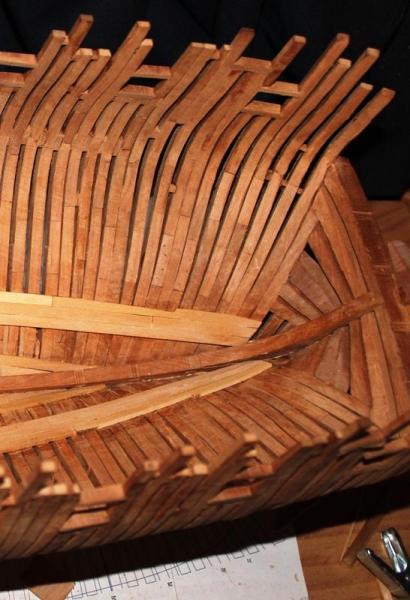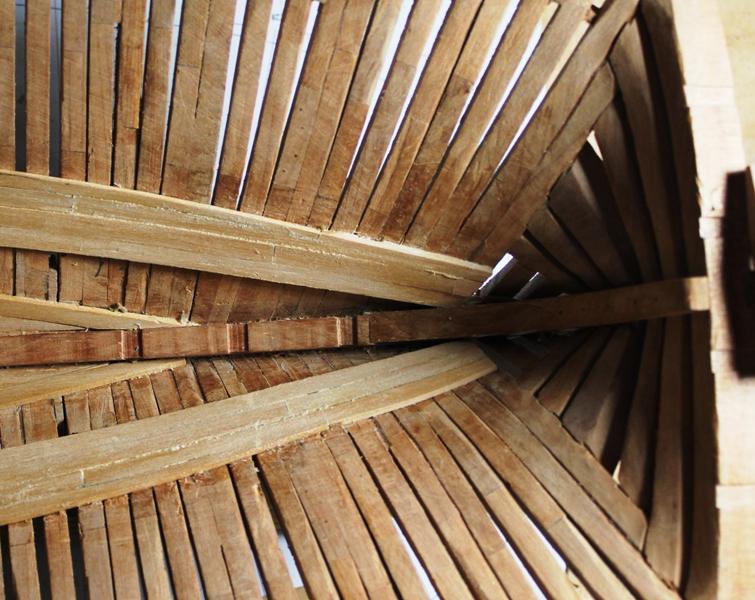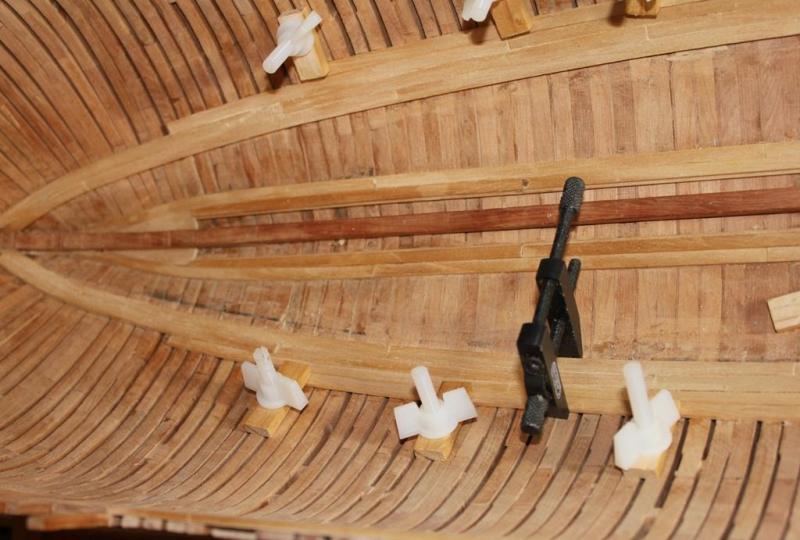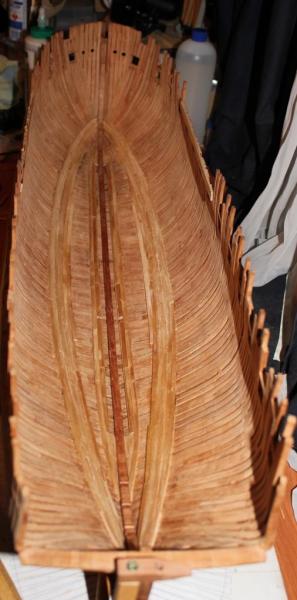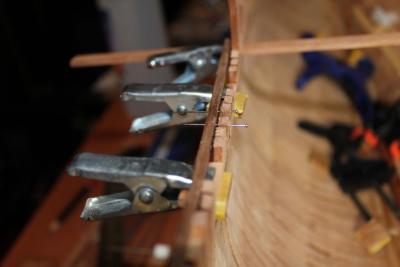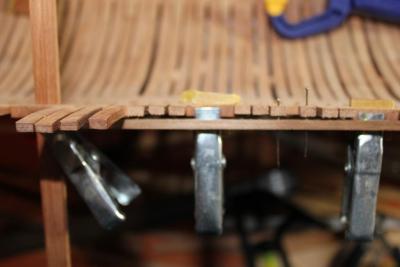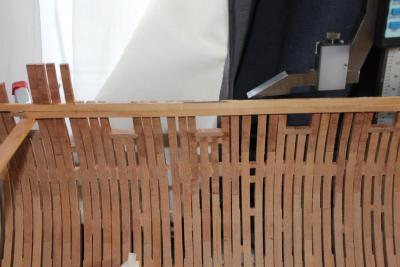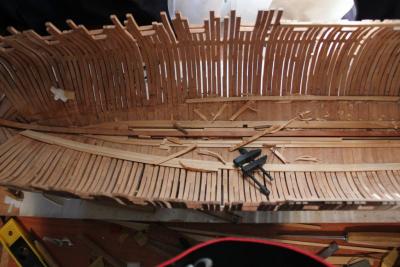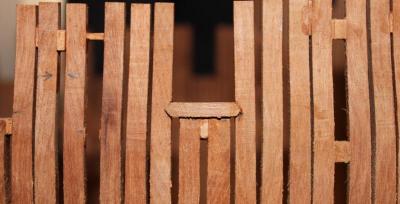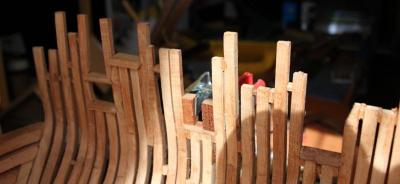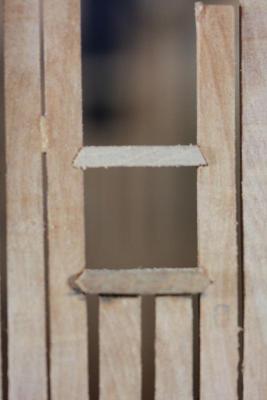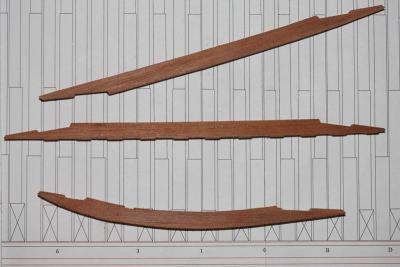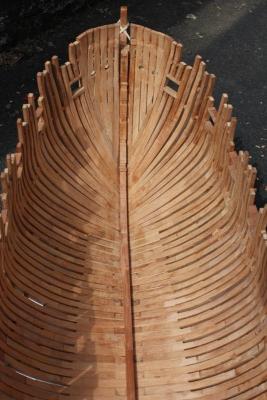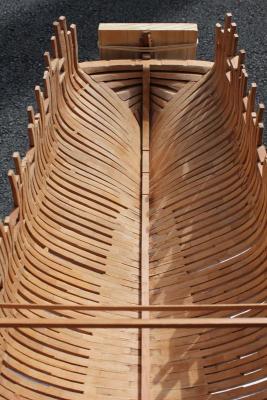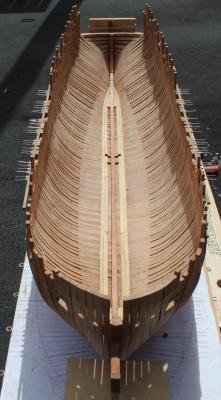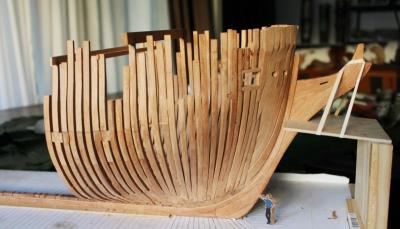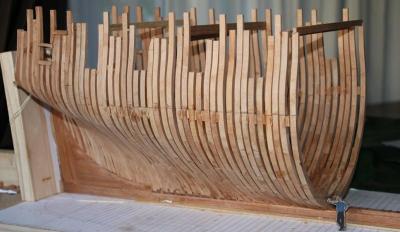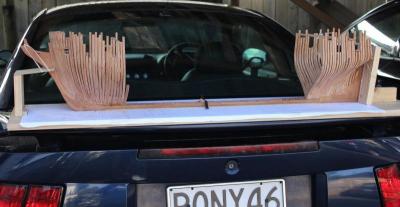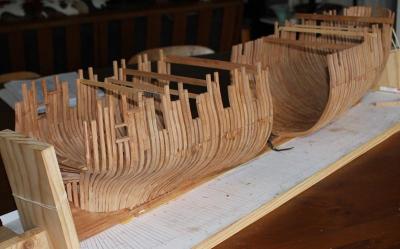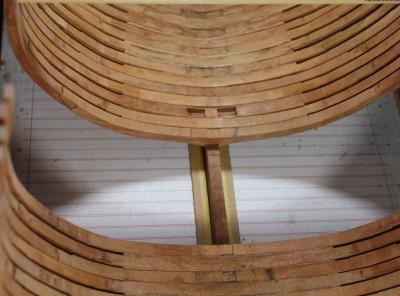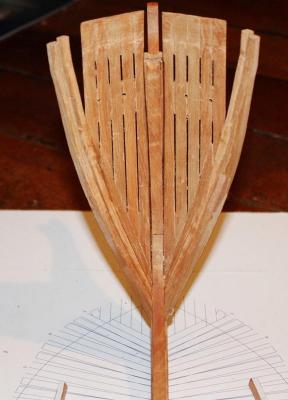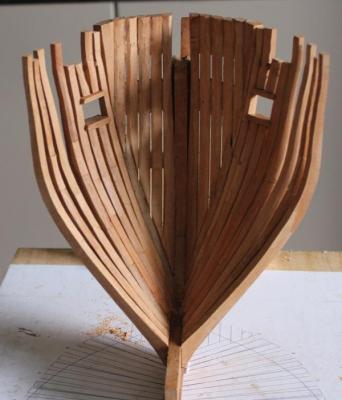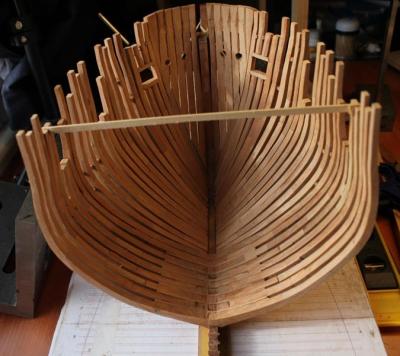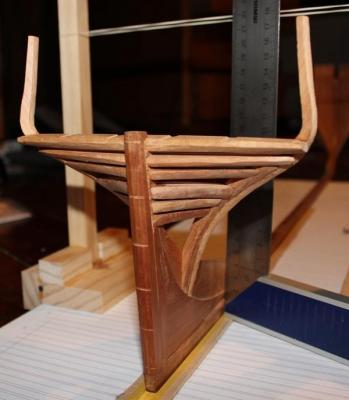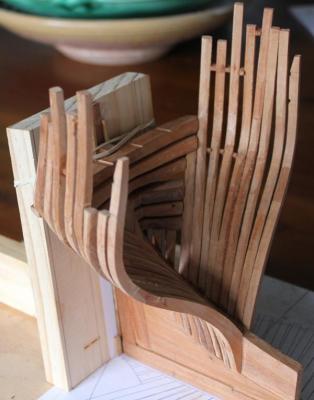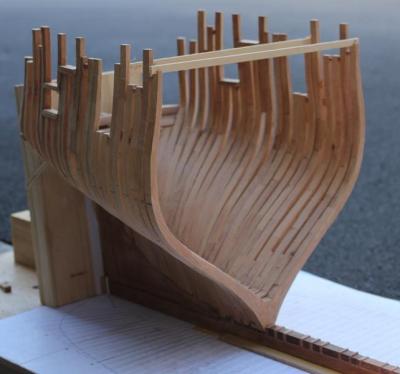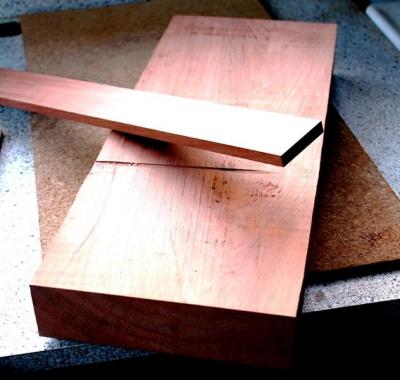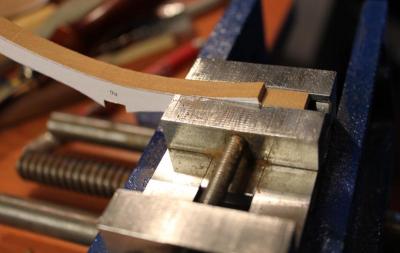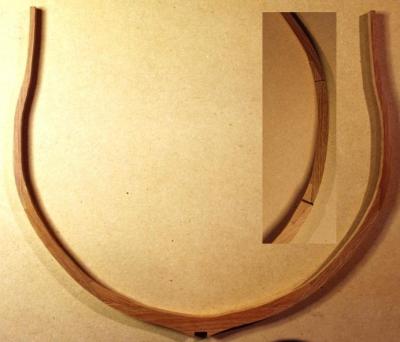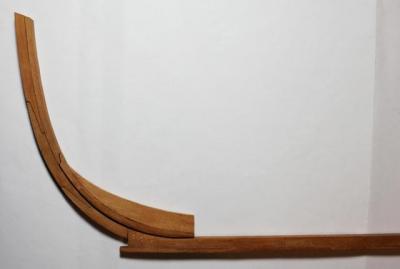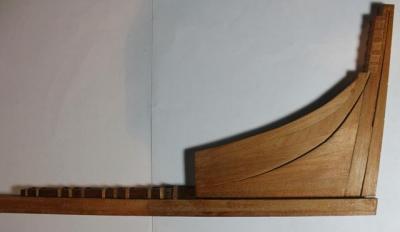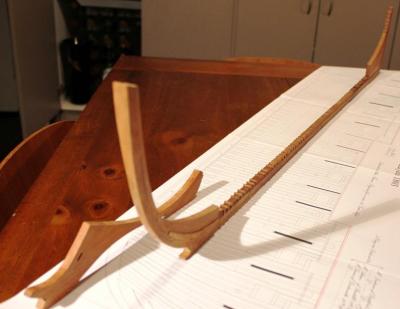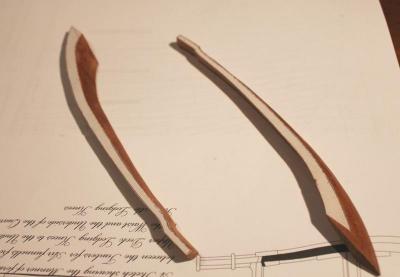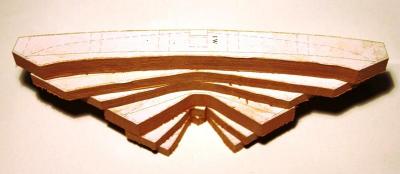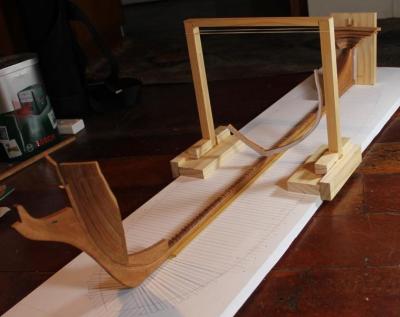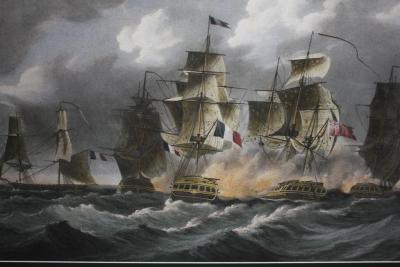-
Posts
74 -
Joined
-
Last visited
Content Type
Profiles
Forums
Gallery
Events
Everything posted by robbl
-
Taken from a table in Euryalus Vol II, quoting the same book as Blue Ensign (I'm not sure what all the numbers mean, just taking it from the table in the book ) 30 foot barge Sweep 21 foot Handle 1 foot Loom 8 foot 6 inch Body 4 foot 6 inch Blade 7 foot Loom: Blade 7 foot, 4 inch square Blade: broad - innner 3 1/8", outer 6 1/4", Thick - inner 2 7/8", outer 7/8" Handle 1 3/4" diameter
-
Hi Allan and Wayne Volume II arrived in NZ yesterday, great work. I had a quick scan through the text and diagrams, drooled over the colour photos, then ripped open the plan package...... 1:12 cannon and carronade plans .....I detect a distracting side project Not to mention the masts and ship's boats. Thanks for your hard work guys. Cheers Rob
-
Hi all I made a mistake typing up my last update and used the wrong numbers for the widths of the floorhead planks, so I corrected them in the text. The planks on the model are the correct dimensions, it was just a case of me typing without checking Cheers Rob
-
Egen, I was going to mention the dust and scratches.......honest I have a Canon 550D SLR. A couple of the photos have been done on the phone camera, but the Canon is the "go to" camera, and as you say, it is very useful for highlighting things. There have been a few times that I have dismantled frames after taking a photo. And I have a macro lens that I sometimes regret buying as well - it is veeeerrrrry sharp...... There is a program called helicon remote that is worth looking at which lets you take a series of shots at different focal distance, then merge them into one for a fantastic full length shot of a long subject like the ships. I must dig out a test I did and post it. Cheers Rob
-
Hello again. The last while has been busy with all the unimportant things in life, like the dreaded work, so I have not made much progress at all. After seeing Egen's last update, I have to resist the urge to jump ahead of myself ..... After running the floorhead thickstuff along the wrong lines, I ripped them all off and started relaying them. Most of the damage done by my wild flailing about with my chisels is now conveniently hidden by the new planking, but I do have a little cleaning up to do. These consist of two runs of 12 11 x 5 inch (22 inch total) with 2 runs of 11 10.5 x 4 inch (21 inch total) each above and below.Midships this totals 6 planks wide, reducing to 4 planks at the ends. Midships and aft, there is little curve, so I just steamed the planks and clamped them while gluing. Where the planking meets the keelson at the bow, it was easier to spile the planks than bend them. Where the number of planks reduced from 6 to 4 at each end, I used a drop strake on the thinner planks above and below the two main planks to merge the two into a single plank running to the ends. The photos are not very good, so I hope to replace them later this week with shots taken outside in natural light. Midships, middle two runs of thickstuff done, the first run above that being clamped in place. Towards the bow, and both the top runs are being fixed in place. The last planks at the bow are spiled as the curve was too great to bend the planks. At the stern, the lower of the two top runs is cut to allow the top run to "drop" into it forming ..... .... a single plank to terminate at the aft fashion piece. The same happens forward, and a variation happens to the lower two runs at each end below the main thickstuff. And so far, the planking is done except for 4 lengths which "drop" into the last planks at each end. Cheers Rob
-
Egen, that looks absolutely great! What are the woods you are using? - I like the contrast. You are progressing really well. As to my log - slow going at the moment but I'll put some pics up today Cheers Rob
-
Hi Egen Those limber strakes and floorhead thickstuff look great, as do the platforms. She is coming along nicely. Cheers Rob
-
Welcome back again Egen. Those photos sure show how much effort goes into the frames. Looking forward to more. Cheers Rob
-
Hi Ron Yes, the limber strakes are Kauri. I'll be doing most of the inboard planks in that. When I get to the platforms, I'll probably be using a darker red Totara from some blocks of wood I have. Cheers Rob
-
Thanks all and nice to see the logs coming back too. That's a bought clamp, called a Machinists Style Clamp and is similar to the wooden handscrew clamps. I can't remember where I got them from, but I see Lee Valley has them listed in its clamp section. Ed Tosti's Naiad book describes how you can make these out of wood and a bit of brass. Cheers Rob
-
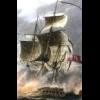
HMS Bounty by DSiemens - FINISHED - Bottle
robbl replied to DSiemens's topic in - Build logs for subjects built 1751 - 1800
Lovely work. -
So, where it is now: I have added the waist strings to give some strength to the upper timbers in the waist. To align the planks to the bottom of the upper sills, I clamped small blocks to the upper sill so that the planks sat onm these at the correct height. I laid the floorhead thickstuff by first working out the line of the planks where the two thickest (the middle 2) planks run along the hull. I then laid the lower of those two planks from stem to stern until they met the keelson. Then I looked at what I had done, and realised I had run them to meet the keelson where the top plank should have met .... arghhhhhhhh Naturally, I had managed to run several of the planks adjacent to these, so everything needed to be removed. I commented before how strong this hull is.....very little damage has been done even after rough abuse with chisels. One thing I have noticed - every little scrap of wood in the hull ends up in the limber channel or the pump wells. It is almost as if it was designed with this in mind! Ripping out the bad .... But to finish this summary - I'll use this tidy picture
-
Cutting the gun ports went ok, up until I realised I should recalibrate the vertical gauge more often Keelson went in no problems: Followed by the limber strakes:
-
And so onto the square frames. These I found easy and work rate accelerated during this phase as the ends came together. Close up of the pump wells And done .... So with the framing done, time to get on with the gun posts and keelson.
-
Hi Allan, same to you! You'll be able to post your Euraylus log now!! So - on with putting the bits together and making it look like a ship. The fore and aft cant frames were the first to go up. At the beginning, I ignored all the sage wisdom of the site and authors, and was going to cut the gun ports as I went. That idea was short lived.... The cant frames were straight forward. When I do this again, however, I will build square frames off the ship to get "into the groove" before doing the more difficult cant frames.
-
First up, the beginning of the build. The keel: This was straight forward, although I now have 3 keels, 2 stems and 3 stern posts and deadwood. The Hawse Timbers and Transoms: Surprisingly, these actually went to gether very well. Ok, I admit I have two sets of hawse timbers .... The frames: I tried a few ways of building the frames, but in the end settled on doing the job as it was done in the yard, by using chocks. This has resulted in a strong frame (I can attest to the strength ) This is some of the Totara being used. And some shots of the frame making process:
-
As my first scratch build project, I chose to build the frigate HMS Blanche (1800), one of the 27 Apollo class frigates of 36 guns built to the design of William Rule (see wikipedia). The Blanche was built at Deptford by John Dudman and launched in 1800. In 1805, after some success in the West Indies, she was captured and burnt after a battle with 4 French vessels. One reason I chose to start this build was the book Frigates of the Royal Navy, HMS Euryalus by Allan Yedlinski and Wayne Kempson. Without this book and the accompanying plans, I would not have even contemplated a start. Along with the book, this site and the logs on it written by extremely skilled modellers is a fantastic resource. This will not be a fast build, and there will be some work done over a few times, but a after year into the project it remains a lot of fun. Thus far, I am using Totara for the keel and frames, Kauri for the inboard planking and intend to use Rimu for some internal work. All these are New Zealand native and are sourced from old floor boards, church pews and scrap fence posts. I have the plans from Greenwich (although Wayne's plans are superb and all that is required), and also got a print from them. So, here is my Blanche ..... Cheers Rob Current build status
About us
Modelshipworld - Advancing Ship Modeling through Research
SSL Secured
Your security is important for us so this Website is SSL-Secured
NRG Mailing Address
Nautical Research Guild
237 South Lincoln Street
Westmont IL, 60559-1917
Model Ship World ® and the MSW logo are Registered Trademarks, and belong to the Nautical Research Guild (United States Patent and Trademark Office: No. 6,929,264 & No. 6,929,274, registered Dec. 20, 2022)
Helpful Links
About the NRG
If you enjoy building ship models that are historically accurate as well as beautiful, then The Nautical Research Guild (NRG) is just right for you.
The Guild is a non-profit educational organization whose mission is to “Advance Ship Modeling Through Research”. We provide support to our members in their efforts to raise the quality of their model ships.
The Nautical Research Guild has published our world-renowned quarterly magazine, The Nautical Research Journal, since 1955. The pages of the Journal are full of articles by accomplished ship modelers who show you how they create those exquisite details on their models, and by maritime historians who show you the correct details to build. The Journal is available in both print and digital editions. Go to the NRG web site (www.thenrg.org) to download a complimentary digital copy of the Journal. The NRG also publishes plan sets, books and compilations of back issues of the Journal and the former Ships in Scale and Model Ship Builder magazines.




